Dicentra Seeds Will Need Stratifying Before Germinating – Follow These 7 Steps
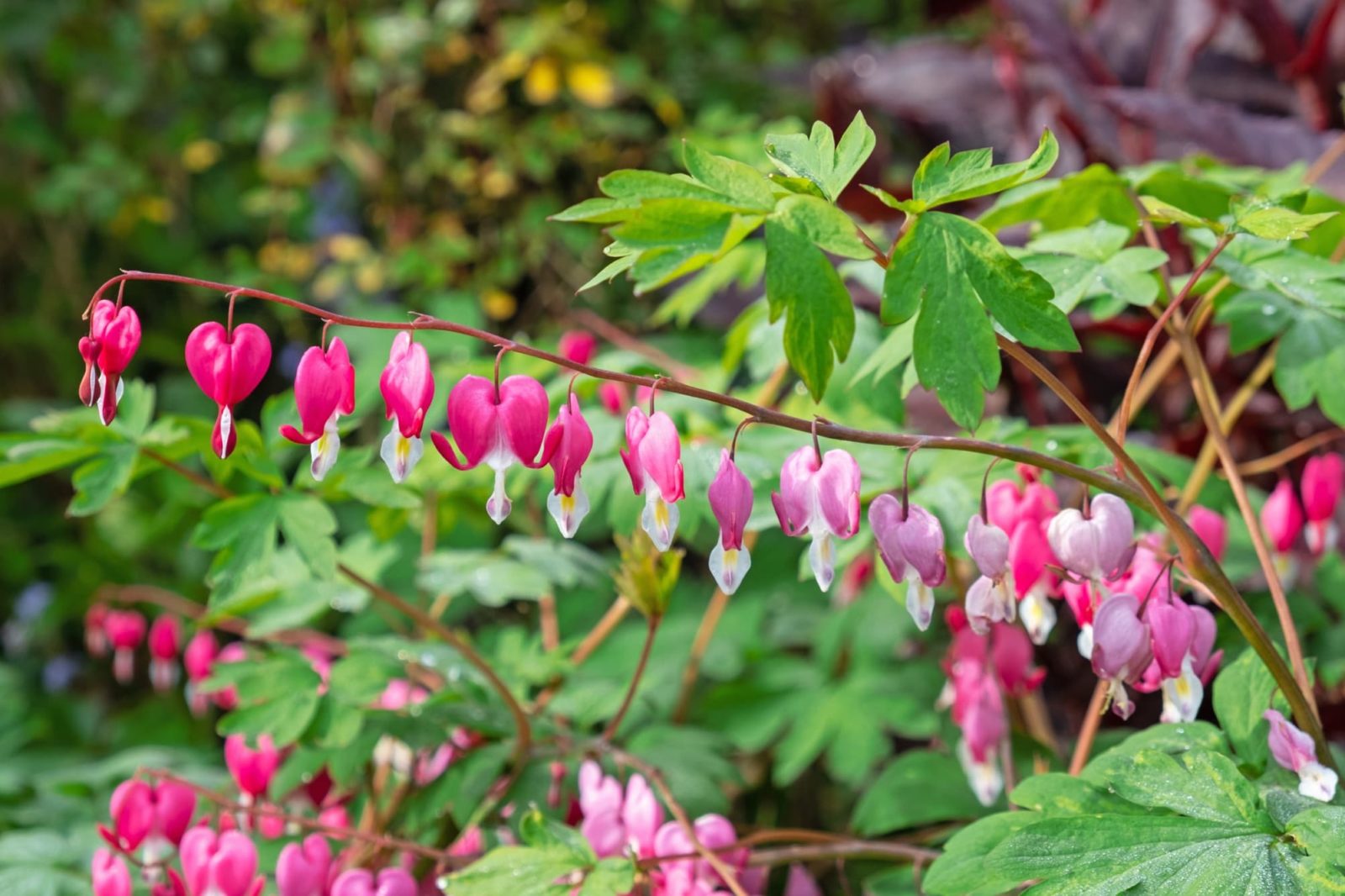
PERENNIALS > LAMPROCAPNOS > SOWING

Elizabeth is a Permaculture Garden Designer, Sustainability Consultant and Professional Writer, working as an advocate for positive change. She graduated from the University of St. Andrews with an MA in English and Philosophy and obtained a Diploma in Applied Permaculture Design from the Permaculture Association.
Reviewed By COLIN SKELLY

Colin is a Horticulturist and Horticultural Consultant with experience in a range of practical and managerial roles across heritage, commercial and public horticulture. He holds the Royal Horticultural Society’s Master of Horticulture award and has a particular interest in horticultural ecology and naturalistic planting for habitat and climate resilience.
Contributions From EMILY CUPIT

Emily is a Gardening Writer, Photographer and Videographer from Derbyshire, UK. She is the Founder of Emily's Green Diary - a community of more than 75,000 people who share in her gardening journey.
IN THIS GUIDE
Dicentra spectabilis, now classified as Lamprocapnos spectabilis and also known popularly as ‘Bleeding Heart’, is an attractive herbaceous perennial with distinctive heart-shaped flowers.
This plant is more easily propagated by dividing mature plants (though care must be taken to avoid damaging the existing roots) or from cuttings obtained in late winter or early spring.
However, with some patience and care, it is also possible to grow these plants from seed.
“Growing from seed is a good option if there are a number of plants required, which can take a while if you rely on division and is also expensive if you want to purchase plants,” shares Master Horticulturist Colin Skelly.
“It pays to research the ideal sowing conditions and have everything in place (including space in the freezer if stratifying) before sowing.”
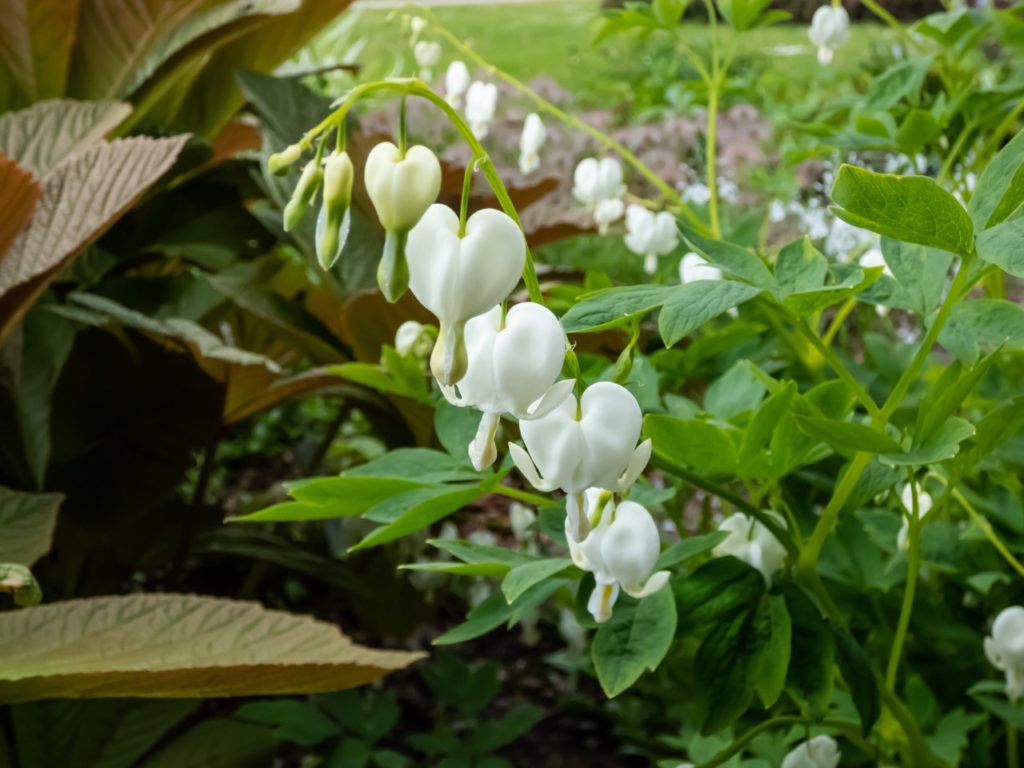
To sow bleeding hearts:
- Collect your seeds when they are ripe for sowing right away.
- Sow your dicentra seeds in potting compost.
- Subject seeds to a period of cold, typically by placing them in the freezer.
- After 2 weeks place the dicentra seeds on a sunny windowsill.
- Maintain watering when appropriate.
- Wait for germination to occur (patience is required as this can take between 2-6 months).
- Thin out the dicentra seedlings and plant out between early spring and summer.
I explain this entire process with each detailed step below.
| Difficulty | Medium to Hard |
| Equipment Required | Seeds, pots or seed trays, potting compost, cold frame or unheated greenhouse |
| When To Sow | August to January |
| When To Plant Out | March to June |
When To Sow Dicentra
You can collect and sow dicentra seeds right away or store the seeds in a cool and dark place until early the following year.
Some gardeners find that they are successful when simply sown right away and then leaving the seeds outside all winter, finding that some of the seeds germinate the following spring.
However, following the steps below will often yield better results.
1) Collect Dicentra Seeds
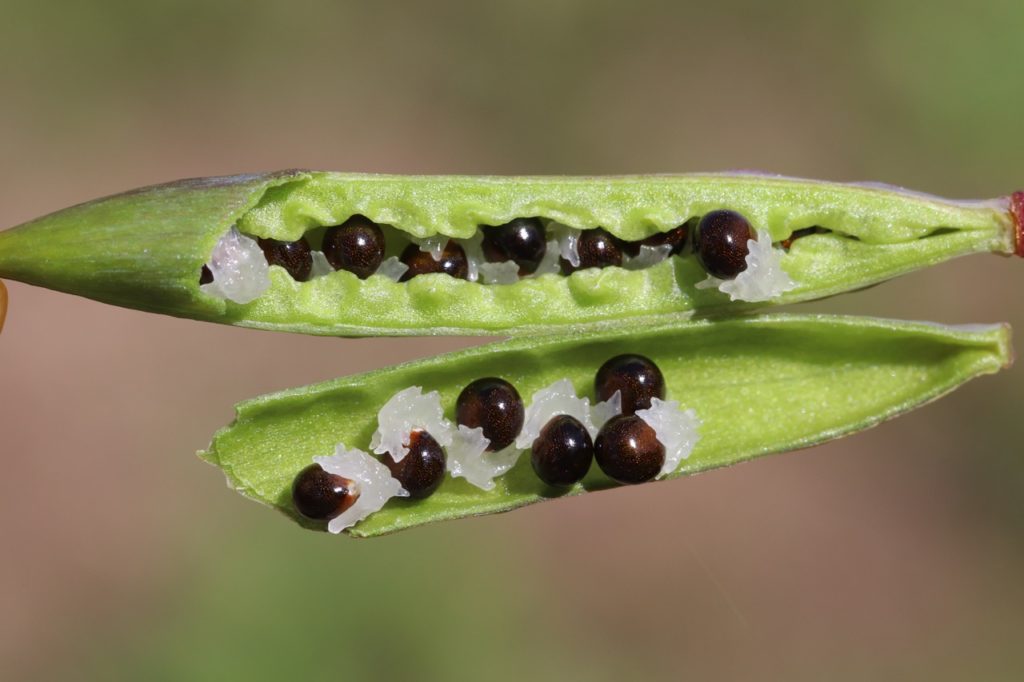
If you are collecting seeds from an existing dicentra, then these can be collected by tying fabric bags over the pods when they begin to turn a beige colour, so that as the pods dry and open, the seeds spill into the bags.
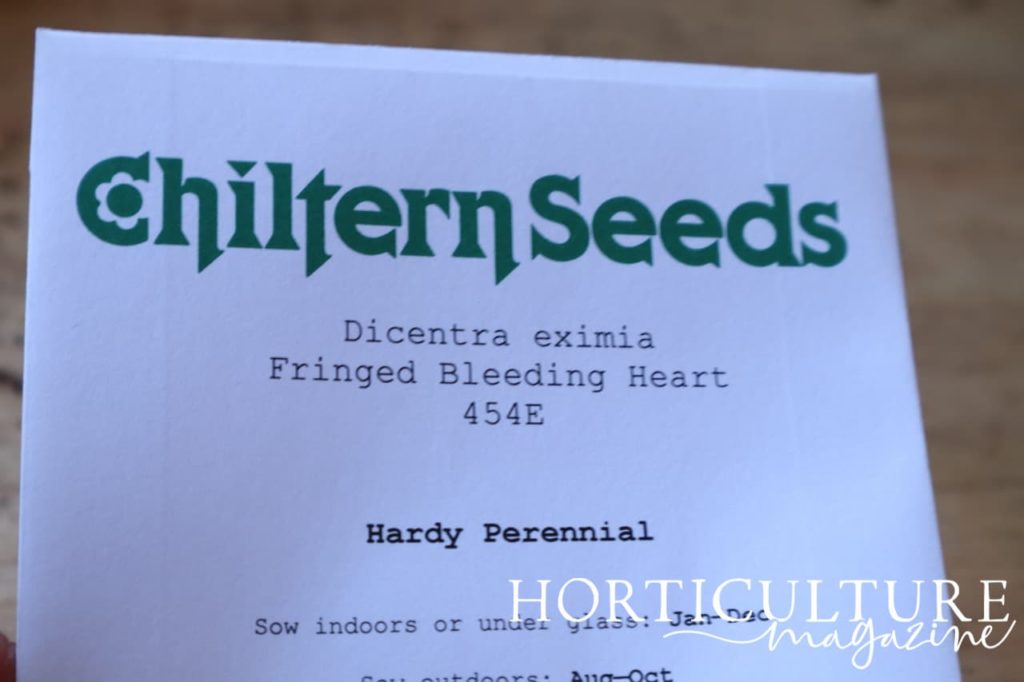
If you choose to purchase seeds, these are best sown early in the year.
2) Sow In Potting Compost
Prepare small seed pots with a good quality peat-free seed compost, then take your dicentra seeds and sow 3-4 seeds in each one.
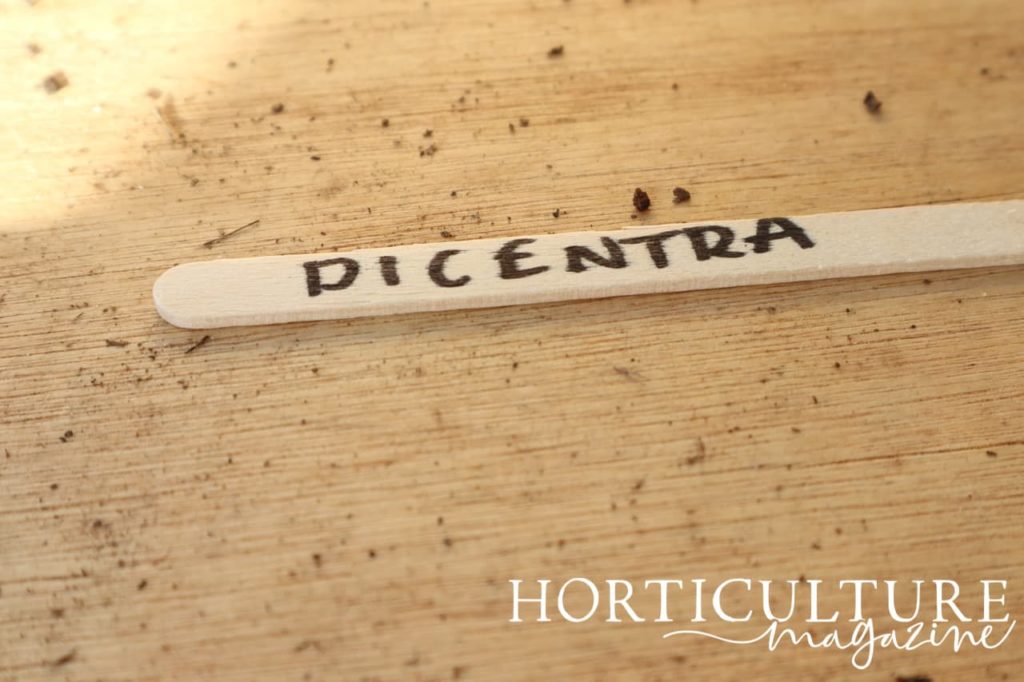
Each seed should be covered with around 1cm of potting compost.
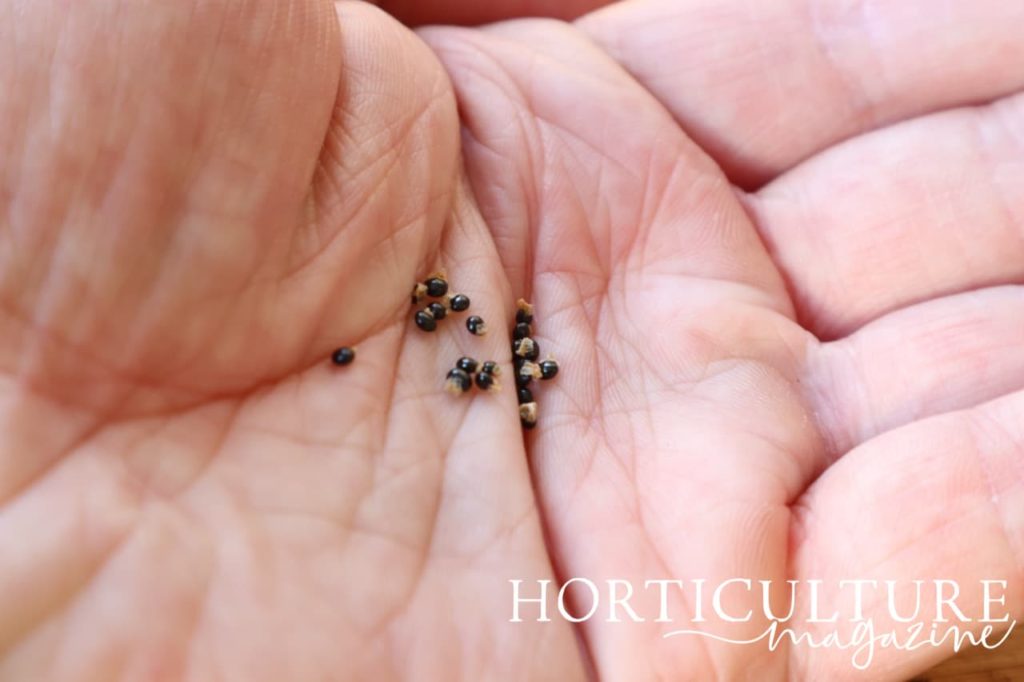
The location where you sow the seeds should be around 18°C and this temperature should ideally be maintained for around 2 weeks to improve germination rates.
3) Subject Seeds To A Period Of Cold
Next, there is another step to improve germination rates.
Take the pots and place them in sealed bags in your freezer.
Keep them there for 6 weeks to expose the seeds to a period of cold stratification.
4) Place Pots On A Windowsill
After taking the seeds out of the freezer, place the pots by a sunny window where temperatures between 15-18°C can be maintained.
5) Maintain Watering
Make sure that you keep the potting mix moist but take care not to overwater.
Bottom watering can make sure that the seeds are not washed away and that the medium does not become waterlogged.
Ensure that excess water can drain away freely.
6) Wait For Germination
Germination will usually take place in 2-6 months, depending on the conditions and when exactly the seeds were sown.
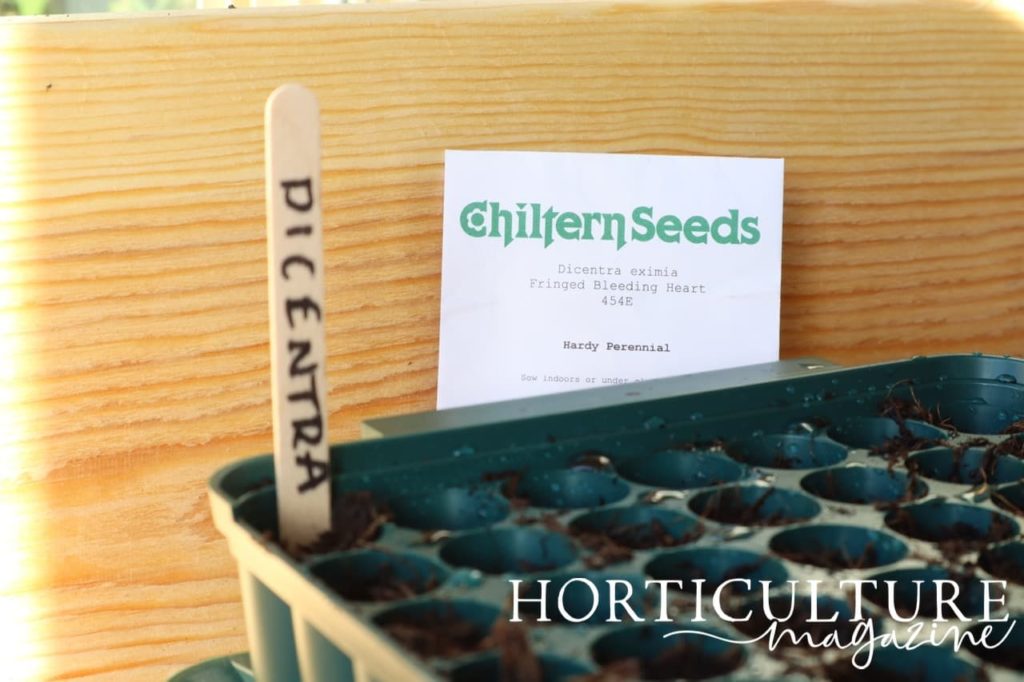
You may begin to see signs of life from at least some of your seeds in March.
However, if they do not begin to sprout in the first spring, leave them in place and some may still germinate the following year.
7) Thin Out Your Seedlings
Once the seedlings do germinate, thin them to leave just one per pot.
These can then be left to grow on in the same conditions until they are planted out in your garden.
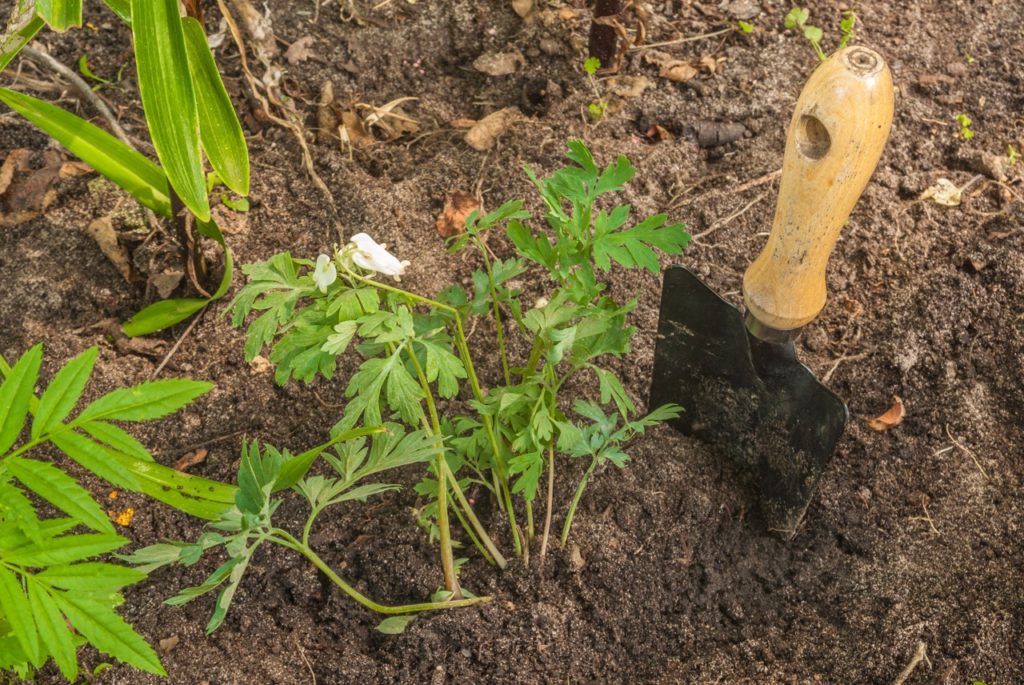
Dicentra are usually planted out between March and June.
